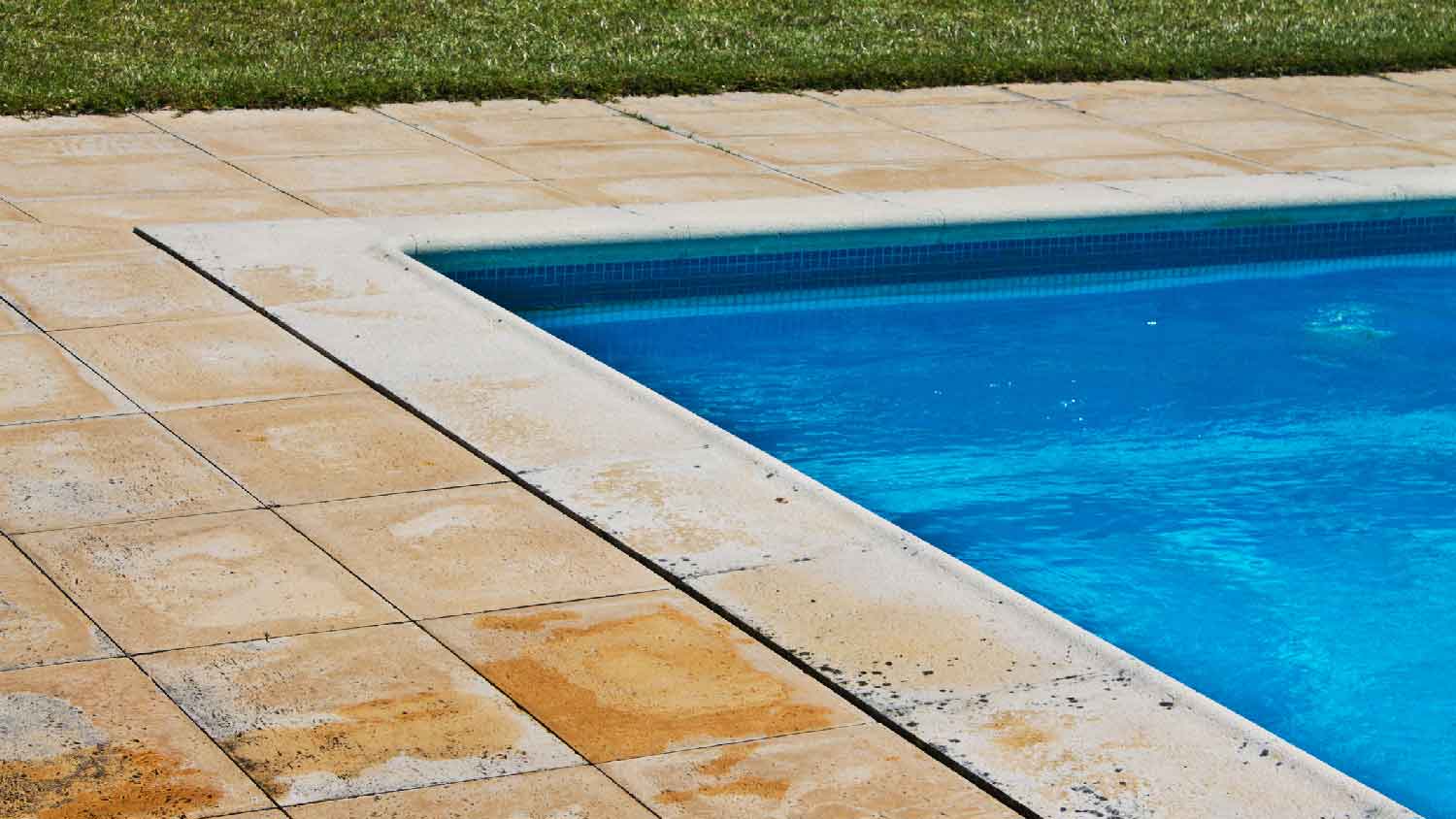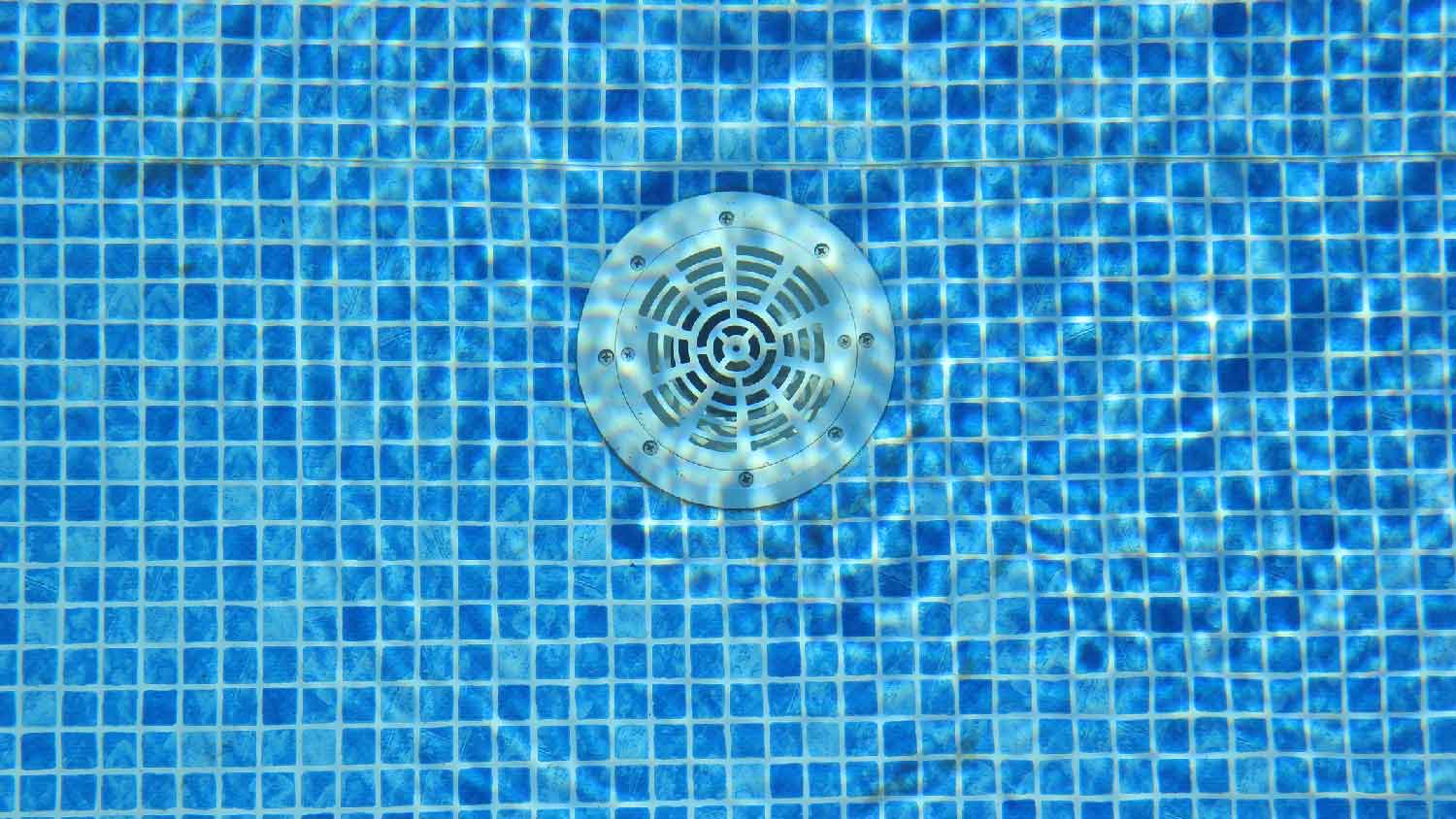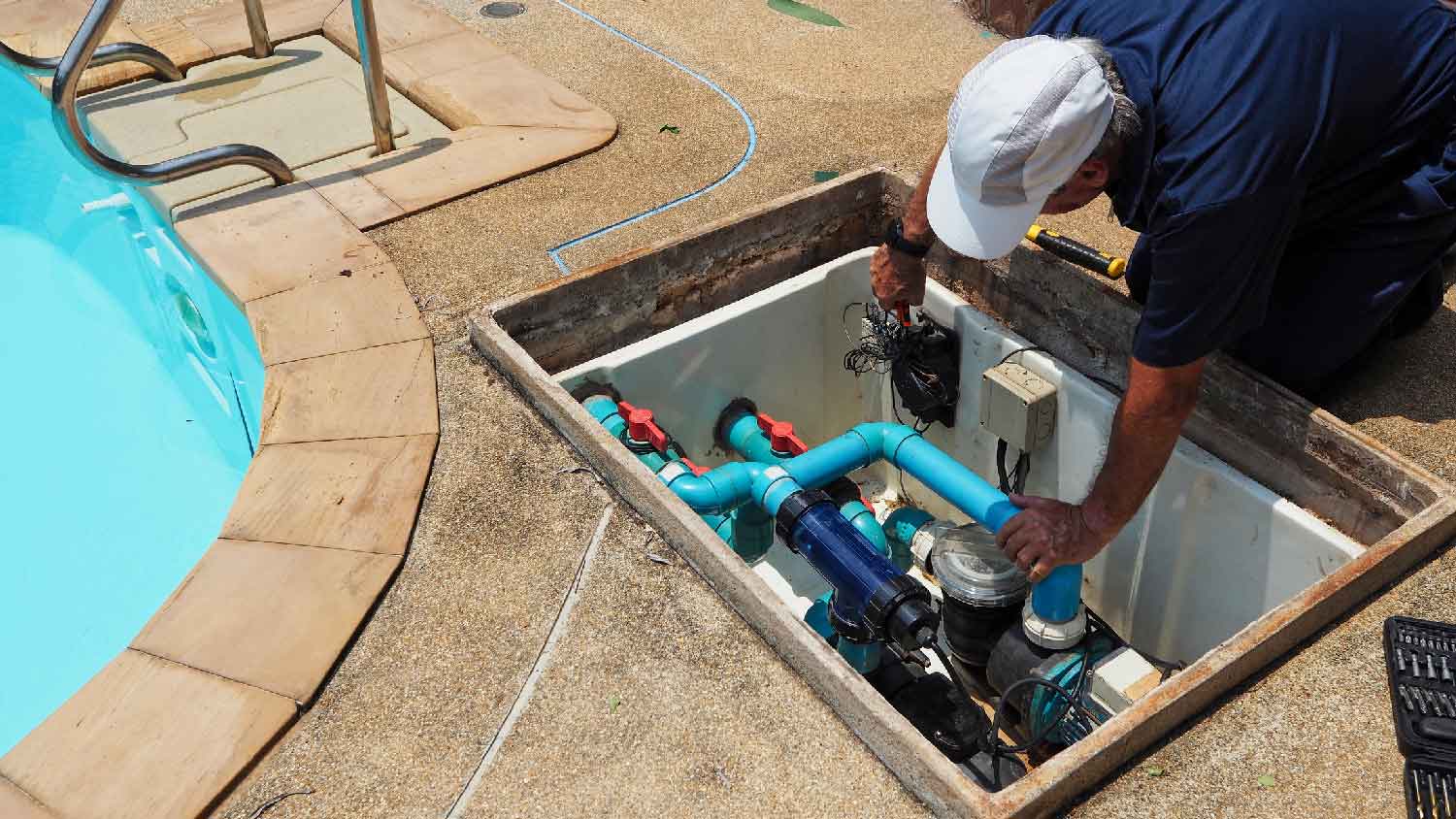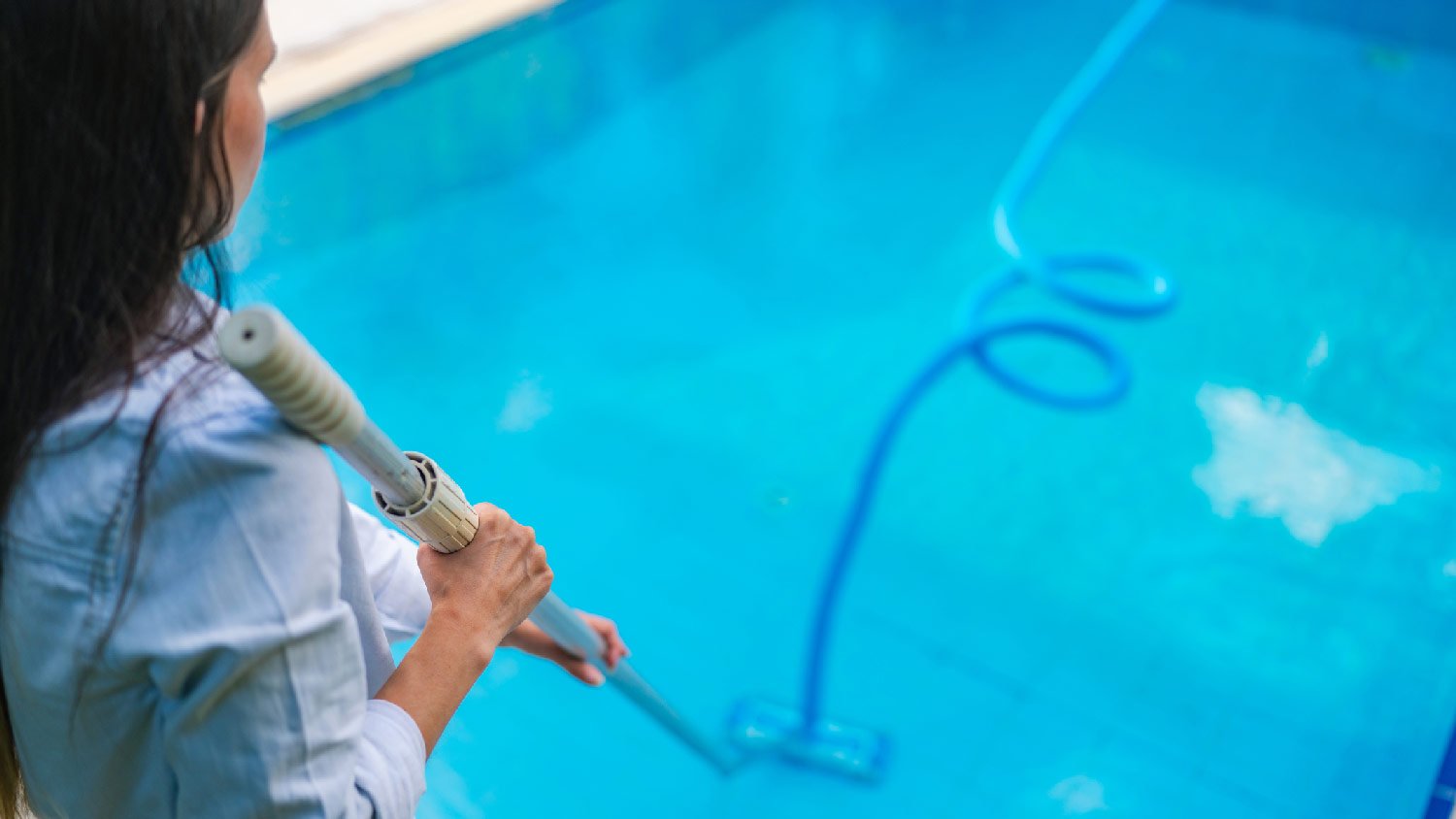
Semi-inground pools offer a nice balance of convenience and affordability. Use this guide to estimate semi-inground pool costs to transform your backyard.
Take a deep dive into pool anatomy


All pools need filtration systems—they often consist of a filter, plumbing lines, pool pumps, skimmers, weirs, and main drains.
Some pools are equipped with pool heaters and chemical feeders to make water more comfortable and maintenance easier.
Regular pool cleaning services and routine repairs can cost around $2,500 annually but help prevent the need for equipment replacement.
Whether you’re new to pool ownership, have owned a pool for years but have never done your own pool maintenance, or you’re considering installing a pool for the first time, understanding the parts of a pool and how they work is helpful for simple upkeep. Take a break from soaking up the sun in your pool or dreaming about putting one in to learn about the parts of a swimming pool and their functions.
Pools might seem simple on the surface, but many different parts go into keeping your water clean, clear, and comfortable. Understanding how the different parts of a pool function together is the first step to being able to carry out your own pool maintenance and saving some money. Below, you’ll find all the parts of a swimming pool, including the optional components, and a quick explanation of how each works.
The shell of the pool is the primary component that holds your water. Pool shells come in a few different materials, including concrete and fiberglass. You also might put a liner over the shell to make it more comfortable on your feet. Most liners are vinyl, but you can install tile or waterproof plaster.

The coping on a pool is the cap that sits on top of the shell around the perimeter of your pool. On in-ground pools, the coping prevents water from dripping behind the shell and causing damage. On aboveground pools, the coping prevents water from splashing over the side and protects the shell from damage. Coping can be aluminum, concrete, brick, pavers, or natural stone.
The filter is the heart of your pool’s filtration system, removing small debris and contaminants from your water. Filters take water from the skimmers and then pass it through a fine particulate to pull out fine particles like sand, diatomaceous earth, or, most commonly, a series of materials found inside a pool filter cartridge.
Skimmers are exit points near the top of the water level that collect pool water and route it to the filter for filtration. Water exits through a hole in the shell and collects in the skimmer basket before passing into the filter supply lines. Skimmers remove large debris from your pool, including leaves, bugs, and small pool toys that would otherwise damage your filter.
The weir works alongside the skimmer to control water flow into the skimmer basket. Weirs can be flaps that open and close with water movement or floats inside the skimmer that raise and lower with the water level. The purpose of weirs is to control the flow of water into the skimmer.

The pool's main drain sits on the shell's floor, usually in the deep end if your pool has gradation. You can use this component to drain your pool, but it also functions like a skimmer when it is full. It doesn’t need a weir since it’s always underwater—it uses pumps to pull water from the bottom for filtration.
Having a main drain on the bottom and skimmers up top provides better circulation for your pool. The combination improves water turnover rate and increases overall pool cleanliness.
A pool heater is an optional piece of pool equipment that heats your water to keep it at a more comfortable temperature. The heater sits aboveground within a few feet of your filter. Your pool pumps move water to the filter and through to the heater for temperature control before pushing it back into your pool.
Heaters come in three main styles: gas, heat pump, and solar.
Gas pool heaters use natural gas or propane to produce heat.
Heat pumps use electricity to transfer heat from the air to your water.
Solar pumps convert sunlight to electricity to heat the water.
Pool plumbing lines are often made of polyvinyl chloride (PVC) and connect your skimmers, filters, pool heater, chemical feeder, main drain, and jets to create a system for circulating water. Plumbing lines for pools can run entirely aboveground, below ground, or a combination of both.

Pool pumps deliver water to and from different components in your filtration and heating systems, making them a crucial part of cleaning and circulating water. Pool pumps can have one of three types of motors to move water:
Single-speed motors: These motors operate at just one speed, which can put added pressure on your filter. They are the most affordable, but they’re also the noisiest and the least energy-efficient.
Two-speed pumps: Two-speed pumps have two operating speeds based on the level of filtration you need. They’re more expensive, but the lower setting puts less pressure on your filter, makes less noise, and uses less electricity.
Variable speed pumps: Variable speed pumps have more than two speeds at which they can run. They come with the highest pool pump costs, but they provide the quietest operation overall, put the least pressure on your filter, and are the most energy-efficient, potentially saving you money on the long-term cost of running your pool.
Return jets sit in the sides of your pool about ten inches below the surface of the water. After water passes through your filter and heater (if you have one), your pump will push water to the jets, which reintroduce the clean water into your pool.
Chemical feeders are another optional pool component that helps keep your water clean with less hands-on maintenance. They consist of a sealed container and a means of controlling water flow through the container. You place a chemical tablet into the feeder, which gradually introduces cleaning chemicals into your pool as water passes through it.

Pool maintenance can quickly get expensive, which can damper your enjoyment. Understanding how to maintain your pool can help save you money on professional pool services and repairs from equipment breaking down from strain. Here are a few maintenance tricks you can use to keep your pool equipment in tip-top shape.
Vacuum once a week: Regardless of how good your filter is, you should vacuum at least once weekly. This will remove algae from the walls and help keep small debris out of your filter, extending its life span.
Maintain water levels: If your water level gets too low, your skimmer can introduce air into your filter, damaging your filter and heater.
Clean your filter: Make sure to change your filter regularly. This includes swapping out cartridges or backwashing and cleaning your sand or diatomaceous earth filter once every three to four months.
Test water quality: Maintaining clean pool water with a healthy pH may not extend the life of your pool equipment, but it can improve pool safety and make swimming more pleasant. Test your water quality at least once a week and adjust as needed.
Repairing different parts of your pool yourself can save you hundreds in some cases over hiring a professional.
If you have a minor leak in your vinyl pool liner that you can clearly identify, it’s possible to implement a DIY solution.
For small tears above the water line, you can often get away with clear, waterproof duct tape that costs around $10 per roll. For damage below the water line, you can invest in a DIY vinyl pool liner patch kit for around $20. Most professionals will charge between $50 and $100 to carry out this repair for you, so the savings are quite impressive.
If the fittings on your PVC plumbing pipes are leaking water, you can safely do a DIY repair to save some money.
The most permanent solution to this issue is to cut out the damaged joint and replace it with a new one. You’ll spend between $5 and $20 for new couplings, depending on the diameter, thickness, and length of the leaking section, and another $5 to $10 on PVC cement. You’ll also need a hacksaw to cut through the PVC, which you can pick up for another $10.
Even if you don’t have the tools beforehand, doing this repair as a DIYer will save around $100 on average.
Clogged plumbing lines and skimmers are another common pool issue, and if you hire a professional to take care of it for you, you can expect to pay between $75 and $125 in most cases. Alternatively, you can use a plumbing snake to clear the clog, which costs around $10.
If that doesn’t work, you can try using a drain-cleaning nozzle, which costs around $25. This device uses an expanding rubber bladder and high pressure to clear out clogs, so you’ll need to be careful not to damage your filter or other components.
For all other repairs, we strongly recommend calling in a pool repair company near you. Any repairs involving the filter, heater, concrete or tile liners, or other components are more complicated, and making mistakes can leave you with more damage and much larger pool repair costs. Calling in a professional for pool repairs is also a wise option if you don’t have time for simpler repairs or can’t identify and locate the specific problem.
From average costs to expert advice, get all the answers you need to get your job done.

Semi-inground pools offer a nice balance of convenience and affordability. Use this guide to estimate semi-inground pool costs to transform your backyard.

The cost of pool liner replacement in Columbus depends on the size and shape of your pool, as well as the liner material and type. Here’s how the costs break down.

If you’ve been considering installing a new pool in the Buckeye State, this guide will help you understand inground pool costs in Columbus.

Your pool losing water could cost you money if it’s due to a leak. Keep reading to find out why your pool’s water level keeps dropping and what you can do.

If your water has high calcium hardness, it's important to learn how to lower calcium hardness in your pool water to avoid corrosion that can harm your pool's plumbing.

Looking for the best types of pool enclosures to cut down on cleanings? Pool enclosures come in a wide range of prices, shapes, and materials fit to your style.